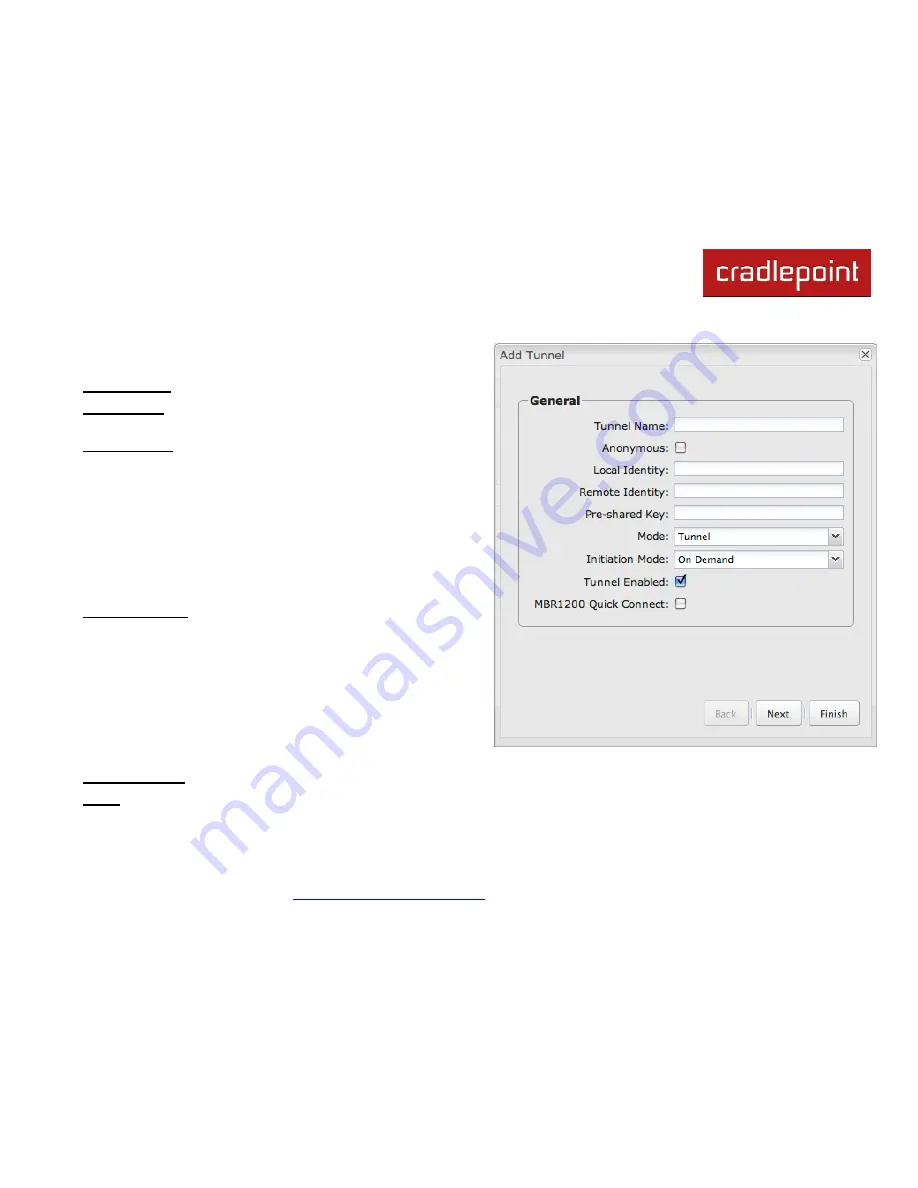
CRADLEPOINT
MBR1400| USER MANUAL Firmware ver. 3.5.0
© 2012
CRADLEPOINT, INC. PLEASE VISIT
HTTP://KNOWLEDGEBASE.CRADLEPOINT.COM/
FOR MORE HELP AND RESOURCES
PAGE 127
7.4.1
Page 1: General
Tunnel Name:
Choose a name meaningful to you.
Anonymous
: Select to
allow remote connections from any IP
address.
Local Identity:
Specifies the identifier sent to the remote host
during phase 1 negotiation. If left blank it will default to the IP
address of the WAN connection. Currently we only support
identifiers in the form of an
IP address
, a
user-fully qualified
domain name
([email protected]) or just a
fully qualified
domain name
(www.mydomain.com). If the remote side of the
tunnel is configured to expect an identifier, then both
must
match
in order for the negotiation to succeed. If
NAT-T
is being
used, a single word (instead of an address) can be used if a
DynDNS connection is not being used.
Remote Identity:
Specifies the identifier we expect to receive
from the remote host during phase 1 negotiation. If no identifier
is defined then no verification of the remote peer's identification
will be done. Currently we only support identifiers in the form of
an
IP address
, a
user-fully qualified domain name
([email protected]) or just a
fully qualified domain name
(www.mydomain.com). If left blank we will default to the IP
address of the WAN connection. If
NAT-T
is being used, a single
word (instead of an address) can be used if a DynDNS
connection is not being used.
Pre-shared Key:
Create a password or key. The routers on both sides of the tunnel must use this same key.
Mode
:
Tunnel
or
Transport
.
Tunnel Mode
is used for protecting traffic between different networks, when traffic must
pass through an intermediate, untrusted network.
Transport Mode
is used for end-to-end communications (for example,
for communications between a client and a server).
Summary of Contents for MBR1400 Series
Page 1: ......
















































